We’ve learned a great deal about Mars in recent years. It’s not the alien-populated planet it was once believed to be, but it’s definitely not the dull, meaningless planet some portray it as. Mars is, in many ways, very much like Earth. Just like Earth, Mars hosted vast amounts of water (something we’ve also learned recently) — but unlike Earth, it no longer has a rich atmosphere, its water is only preserved in pockets, and it is (at least for the most part) lifeless.
However, it seems like the more we learn about Mars, the more questions arise. For every tantalizing answer, three more burning questions arise. Thankfully, more missions are en-route to Mars, including China’s Tianwen-1, the United Arab Emirates’ Hope Probe, and NASA’s Perseverance rover, which could help solve some of these mysteries. For now, here are some Mars facts we’ve recently learned.
Mars is a ‘wobbly’ planet just like Earth, but we’re not really sure why

As the Earth spins during its day, it also wobbles and bobbles ever so slightly around its own axis. Astronomers aren’t really sure why this is happening, but they recently learned that Mars also does it.
It’s called the Chandler Wobble: when a rotating body’s mass isn’t distributed evenly, which causes a wobble. In Earth’s case, it’s mostly caused by its shape, which isn’t perfectly round. In the case of the much rounder Mars, we’re not really sure why it happens, but it could be because of atmospheric motions.
The Martian landscape may have been shaped by megafloods
Mars is, for the most part, a barren and inhospitable place. But go back a couple billion years, and the planet would have been much different. Researchers are now pretty sure that it was once home to oceans and river systems, but according to a new study, it was also subjected to powerful megafloods.
According to the new study, the megafloods would have been triggered by an asteroid impact 4 billion years ago. Although the water is now gone long, evidence of the ripples can still be seen in the shape of the Martian sediments. “Early Mars was an extremely active planet from a geological point of view,” a co-author of the study said in a press release. “The planet had the conditions needed to support the presence of liquid water on the surface”.
Mars still has multiple bodies of liquid water
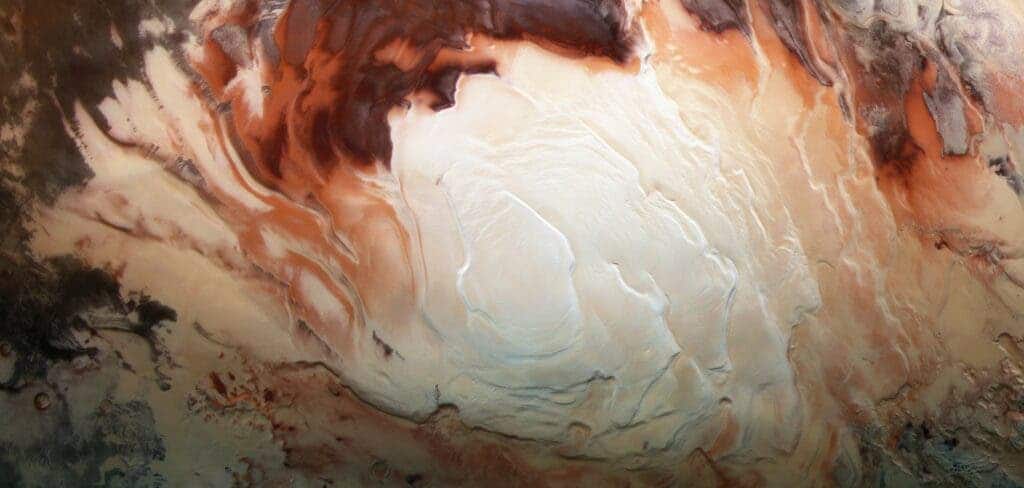
Speaking of water on Mars, September 2020 was a groundbreaking moment, as researchers published data showing that Mars still has salty lakes sealed under its icy polar regions. These subglacial lakes are exciting for two reasons: first, where there’s water there could also be life, and subglacial lakes would be an ideal place to look for life on Mars; and second, this water could also be useful in establishing a human base or settlement on Mars.
When talking about water on Mars, we usually talk in the past tense. Mars had a rich water system, but now it’s gone — the fact that it still has large bodies of liquid water came as quite a shock and made Mars much more interesting than before.
It has auroras
The Martian aurora takes place at night and is generated by the interaction of sunlight with oxygen atoms and molecules in the air. The emission is very difficult to see, even from Earth, which is relatively nearby. The Mars aurora was imaged by European Space Agency’s Trace Gas Orbiter (TGO), which explored the Martian atmospheric environment before delivering the Schiaparelli lander, which crashed on the surface due to a premature release of the parachute.
But here’s the thing: Mars gets auroras almost every day, it’s just that we can’t see them. Unlike their Earthly counterparts, however, you’d need some ultraviolet goggles to see the Martian aurora.

Mars may have had planetary rings (and may get another one)
‘Mars’ and ‘planetary rings’ don’t really seem to get together in the same sentence. After all, planetary rings seem reserved for gas giants like Jupiter or Saturn. But astronomers have recently suggested that Mars may have also had planetary rings.
Mars has two tiny moons, Phobos and Deimos. These moons rotate almost in the same plane as the Red Planet’s equator, which means the moons likely formed at the same time as Mars. However, one of the moons (Deimos) is tilted by two degrees, something which no one really bothered with until recently. Now, a team of astronomers is suggesting that this tilt can only be explained by a grandparent moon which broke down, producing planetary rings in the process.
It had a system of giant rivers that lasted billions of years
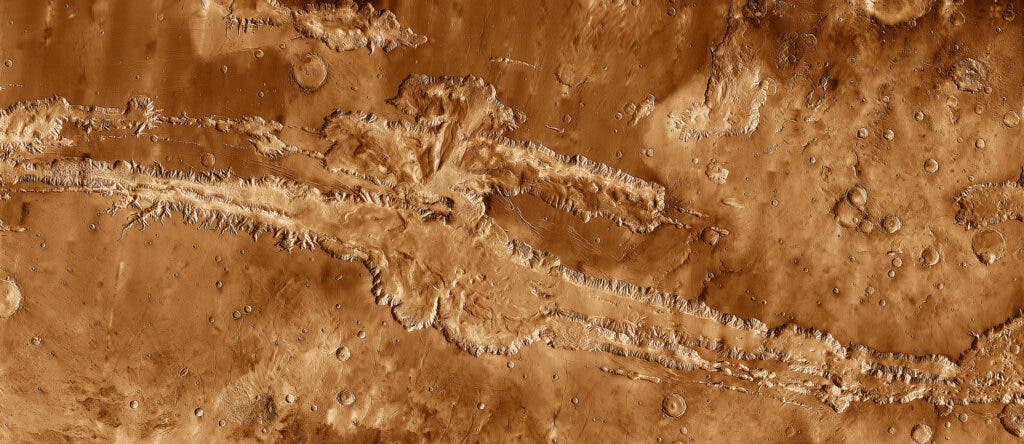
When researchers say Mars had water, it’s not a joke. Analyzing new images of the sedimentary structure of Mars, a team of researchers concluded that in order to produce what can be observed now, the Martian rivers must have lasted for a very long time — up to billions of years.
The sedimentary rocks record layers of history, and the researchers were able to determine that the channels of these ancient rivers were around 9 or 10 feet deep. Mars had “rivers that continuously shifted their gullies, creating sandbanks, similar to the Rhine or the rivers that you can find in Northern Italy,” the researchers said in their study.
It may have been habitable as early as 4.4 billion years ago
We don’t know if Mars was ever truly habitable, but there’s a good chance it was — and for a long time. A 2019 study suggests that Mars may have exhibited conditions fit for harboring life as early as 4.48 billion years ago, predating the earliest evidence of life on Earth by around 500 million years.
There’s a great deal of speculation regarding the potential for life on Mars, but if the planet ever was habitable, and if it had conditions similar to Earth, then life may have well emerged on the Red Planet before Earth. Heck, it could have even migrated from Mars to Earth on meteorites — though again, at this point, this is just speculation.
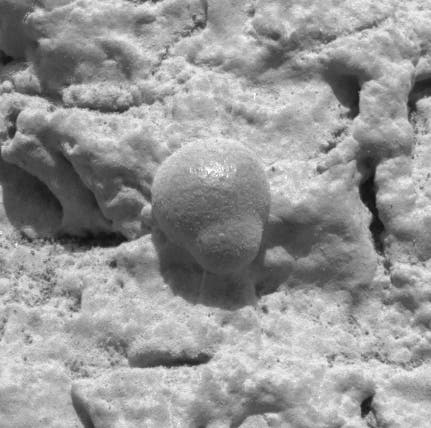
Some of its clouds are made of ground-up meteors
The first strange thing about the Martian clouds is that they exist at all. Down here on Earth, clouds form around tiny particles like grains of dust or salt which act as anchors for water vapor to condense on. But to our knowledge, this mechanism doesn’t exist on Mars.
Around two to three tons of space debris rain down on Mars, on average, every single day, and a new study suggests that these particles form the seed of Martian clouds. The findings are supported by previous research showing that a similar mechanism may help seed clouds near Earth’s poles (where the magnetic shield is weakest).
It has earthquakes — I mean ‘marsquakes’
Unlike Earth, Mars doesn’t really have an active tectonics, which means that its seismic activity is way less intense than that of Earth’s. However, after months of waiting, the Seismic Experiment for Interior Structure (SEIS) on board the InSight Mars lander detected its first ‘marsquake’.
Earthquakes (and marsquakes) are useful for researchers because they can offer information about the subsurface. By analyzing the seismic waves, researchers can infer the structure of the entire planet — that’s how we know what the Earth’s inside looks like, and that’s how we could also understand what Mars is like on the inside.
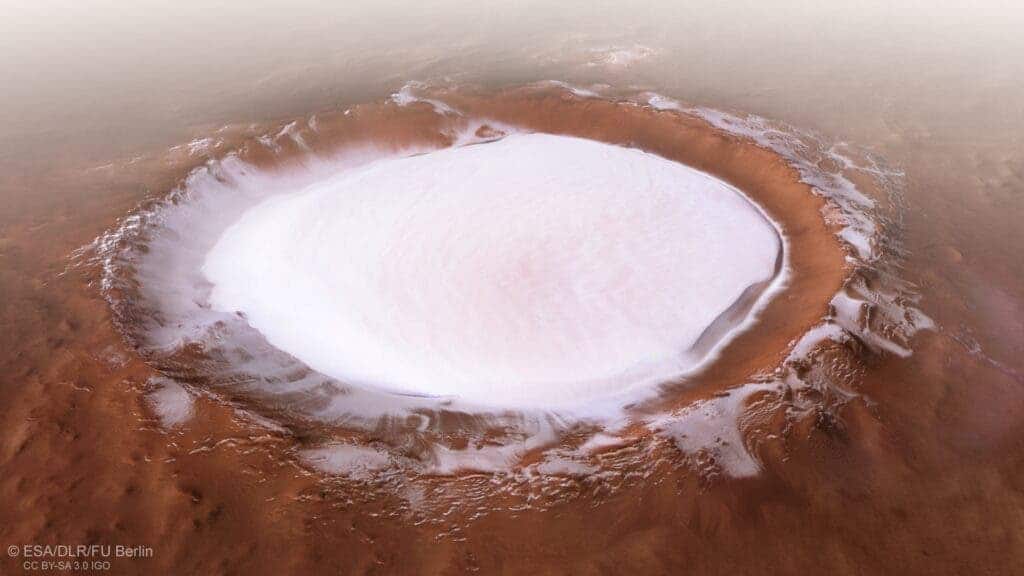
Mars also has methane
Methane is a key molecule for life. The presence of methane could enhance habitability and may even be a signature of life, but it was only confirmed independently on Mars in 2019. Using numerical modeling and geological analysis, a team of researchers at the National Institute of Astrophysics in Rome, Italy, propose not only that methane on Mars exists, but also suggest where it could be located.
Methane is a chemical compound closely associated with microbial life, but it isn’t necessarily biological in nature. There’s a very good chance that the methane is generated geologically, and this is what this new paper also suggests. However, since researchers pinpointed a promising location for future investigations into the origin of methane on Mars, we have a starting point for future missions to look into the origin of this methane.
Mars may yet hold life in salty subsurface waters
As you may have picked up already, a lot of what we’ve learned about Mars recently has to do with the water — but there’s a big reason why we focus so much on this. Water determines potential habitability, and where water exists, life (as we know it) can also exist. If water exists on Mars, this doesn’t automatically mean that life also exists, but it means that life could exist on Mars, and that’s exciting in its own right.
This is different from the study that found subglacial lakes. A 2018 study found that some of the subsurface water on Mars could be rich enough in oxygen to support aerobic life. “That’s the thing of habitability; we never thought that environment could have that much oxygen,” said one of the study authors.
Martian soil is suitable for making bricks
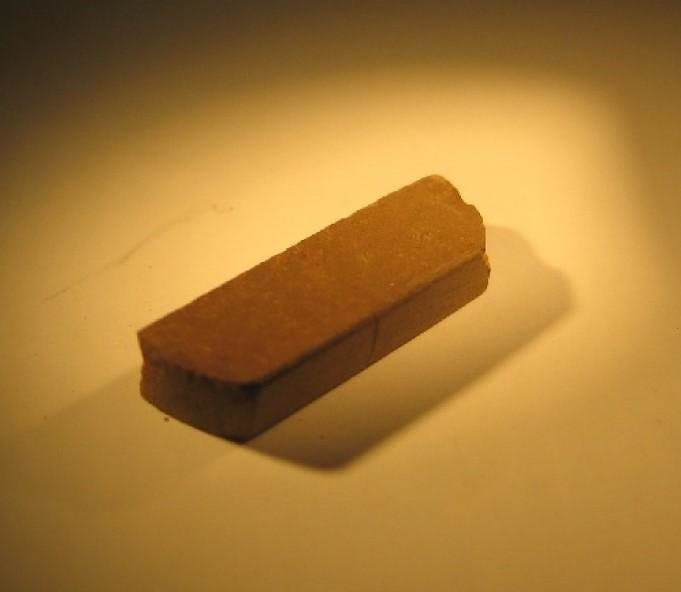
If you want to bake an apple pie from scratch, you may have to invent the universe first — but if you want to make bricks from Martian soil, all you need to do is press really hard on it. A team of engineers at the University of California San Diego worked with a Mars soil simulant and managed to develop durable bricks just by pressing them really hard.
All it takes is the for equivalent to a 10 pound hammer dropped from a height of one meters, they say. Surprisingly enough, with this method, you don’t need ovens or any other ingredients. The method may be compatible with additive manufacturing, meaning astronauts wanting to build a structure would simply have to lay down a layer of dirt, compact it, lay another layer and so on until they’re done.
The Martian atmosphere was stripped by solar wind
Another important question to answer is how Mars got to how it is today. How could a planet with lush river valleys, floods, and active geology become so barren? The key lies in the disappearance of its atmosphere, and according to a recent study, its atmosphere was stripped away by solar wind.
Unlike Earth, Mars lacks a global magnetic field to deflect the stream of charged particles continuously blowing off the Sun. Instead, the solar wind crashes into Mars’ upper atmosphere and can accelerate ions into space, and the atmosphere, once rich enough to support liquid water, is now all but gone.
In its early days, Mars may have been covered by ice
A large number of valley networks scar the Martian surface, but they may have been caused by water melting beneath glacial ice, not free-flowing rivers.
Funnily enough, this type of environment would have been even better for possible ancient life forms. A sheet of ice lends protection and stability, as well as shelter from solar radiation in the absence of a magnetic field (something which Mars once had, but has been gone for billions of years).
These are just some of the many things we’ve learned about Mars recently, thanks to diligent observations and several landmark Mars missions, both in orbit and on the surface of the planet. As the missions continue to unfold and expand, so too will our understanding of the Red Planet.
Undoubtedly, we missed some bits here. Is there anything you’d like to see added to this list? Mention it in the comment section.


